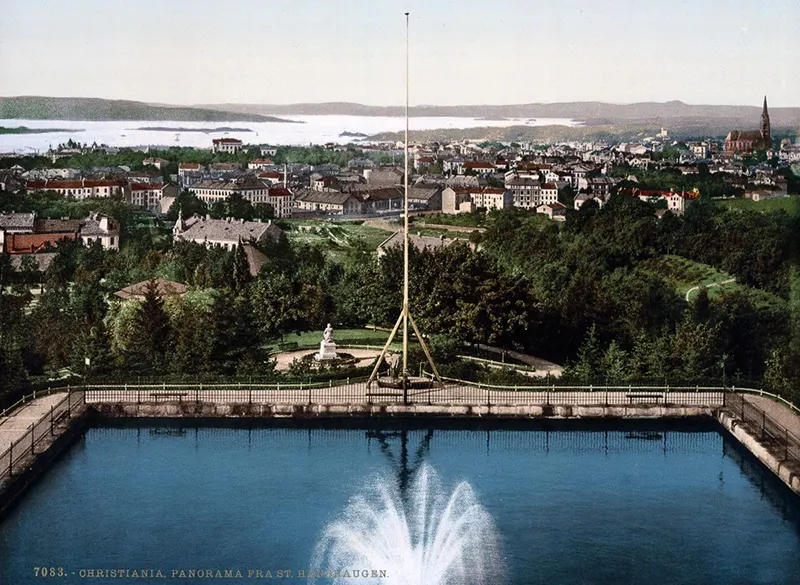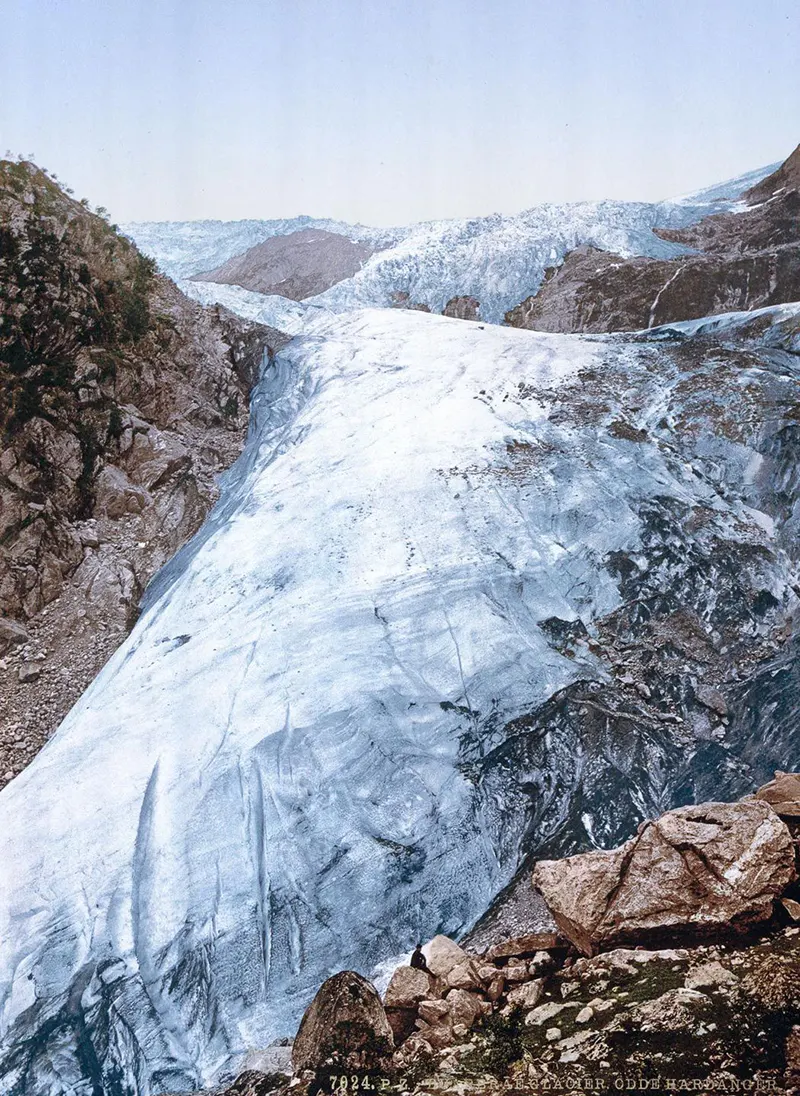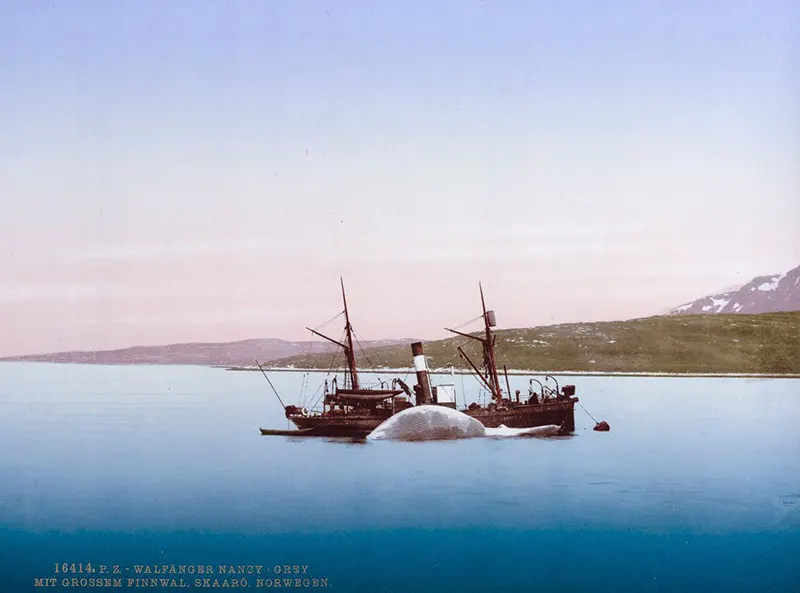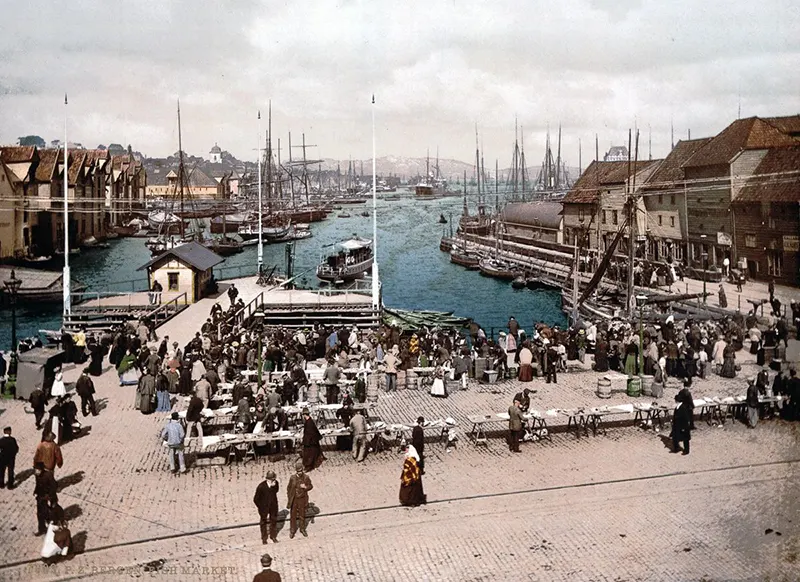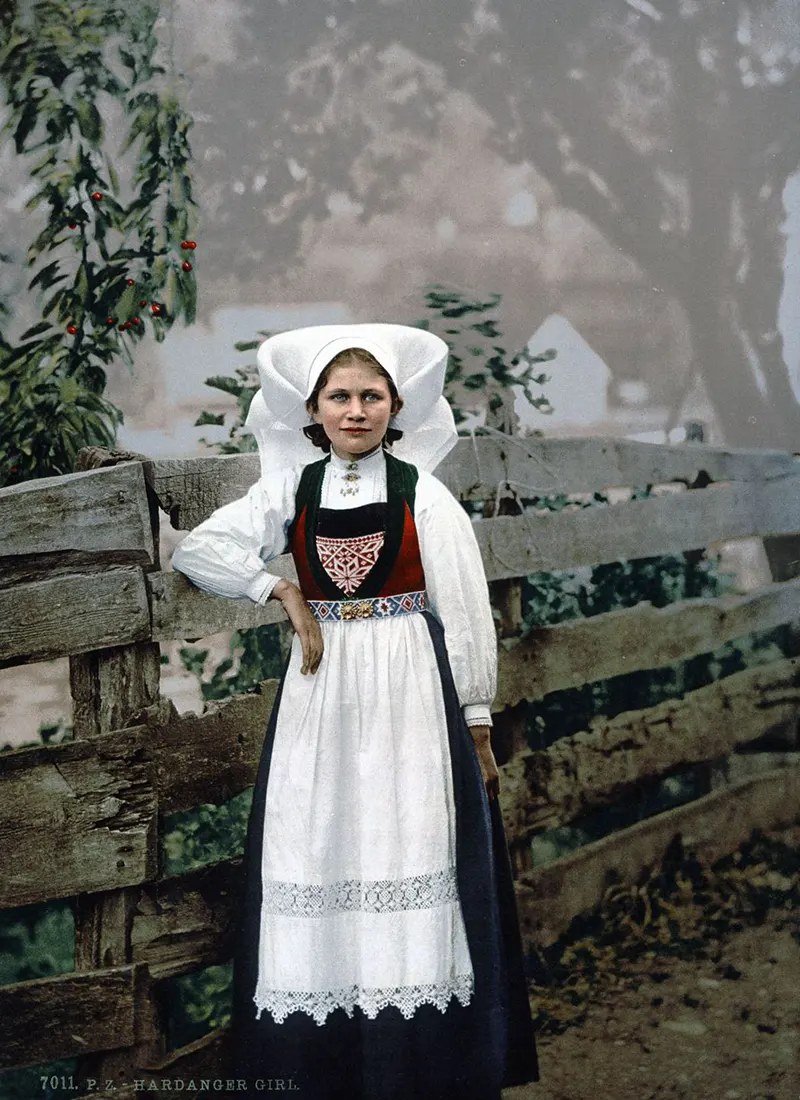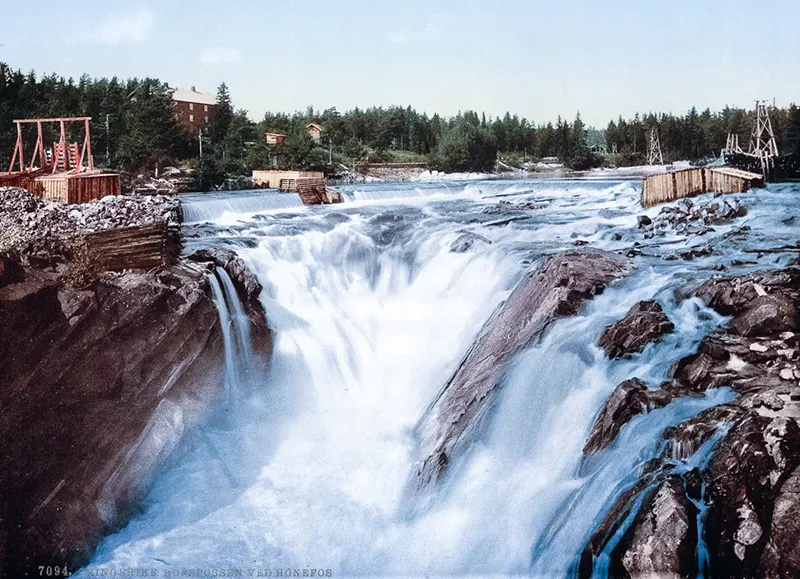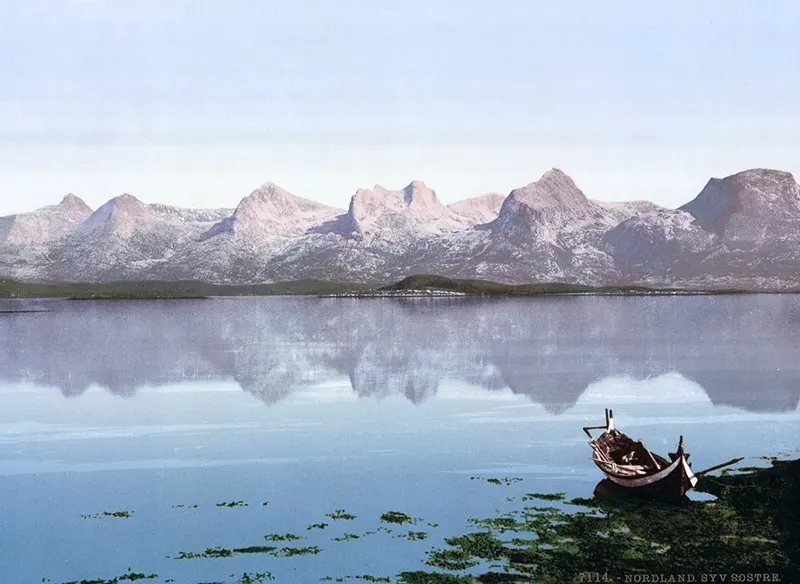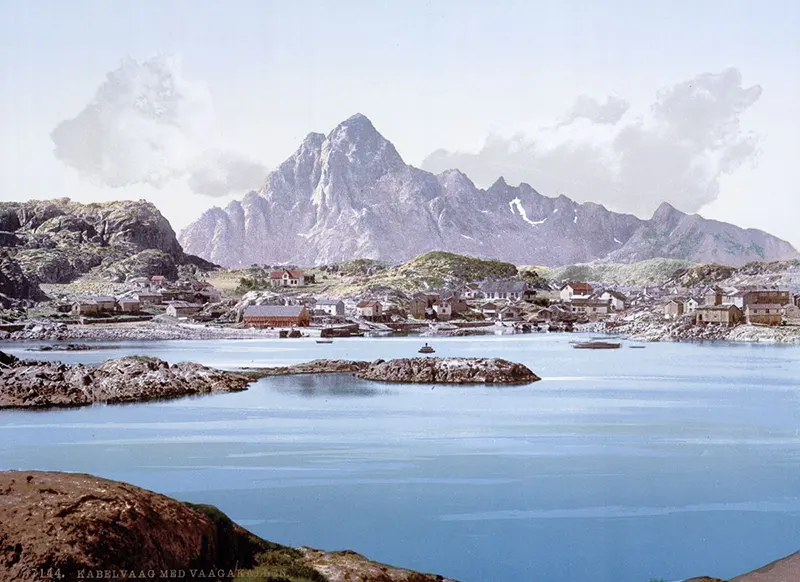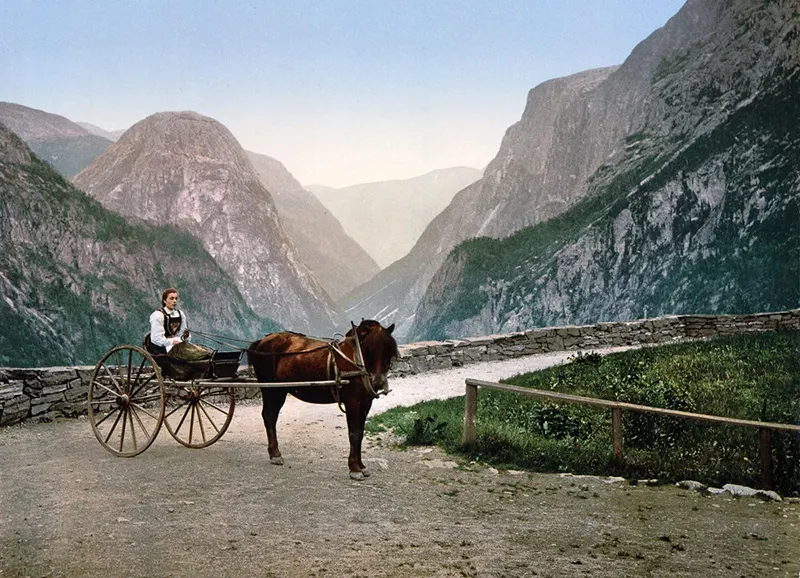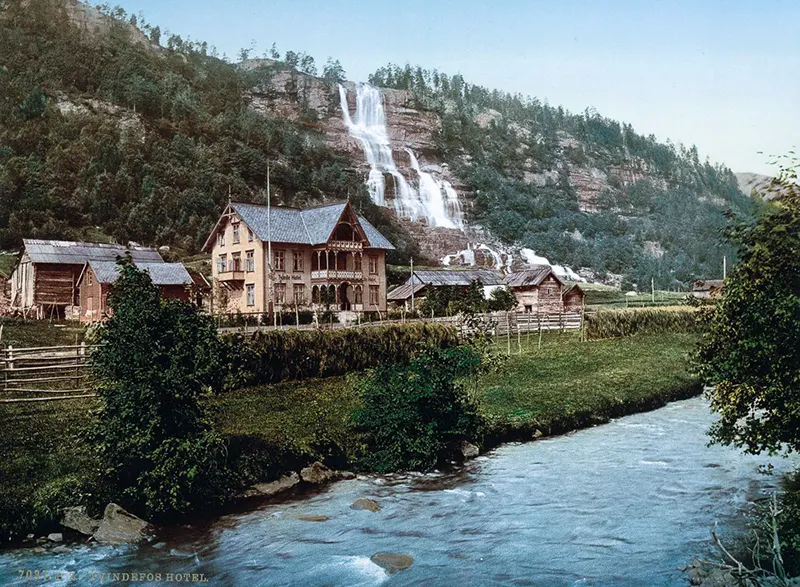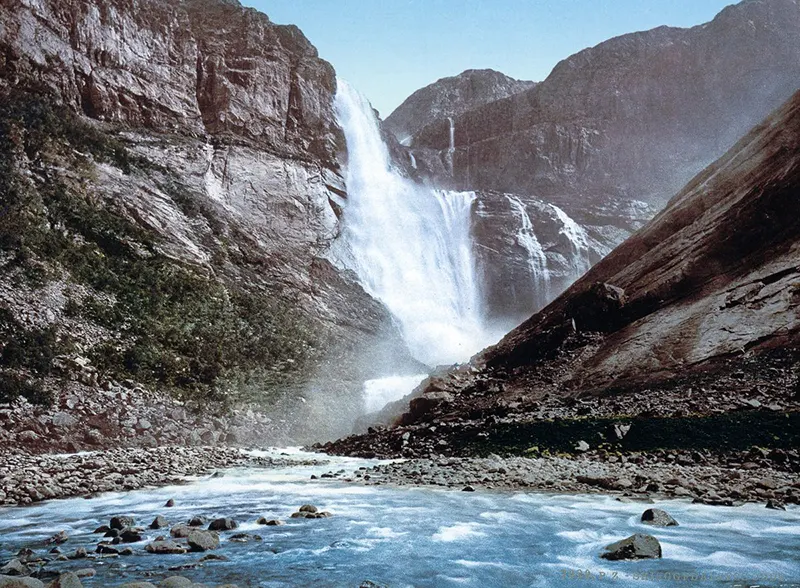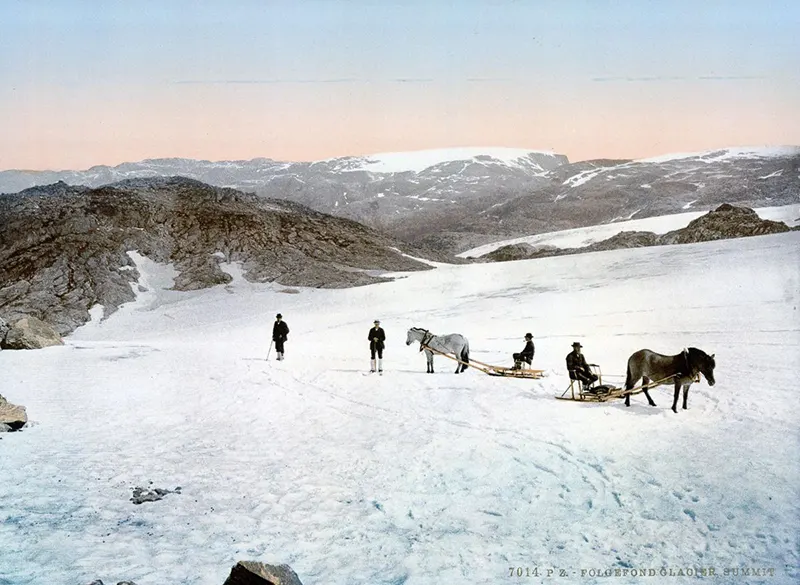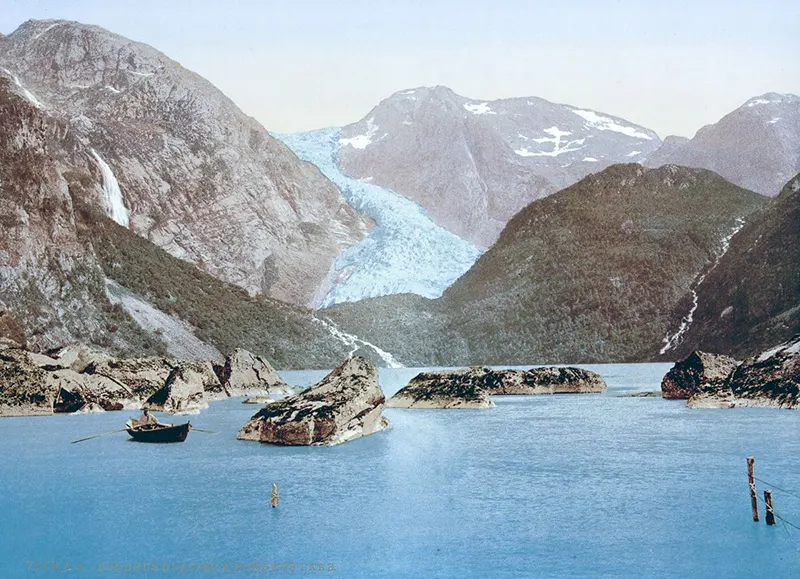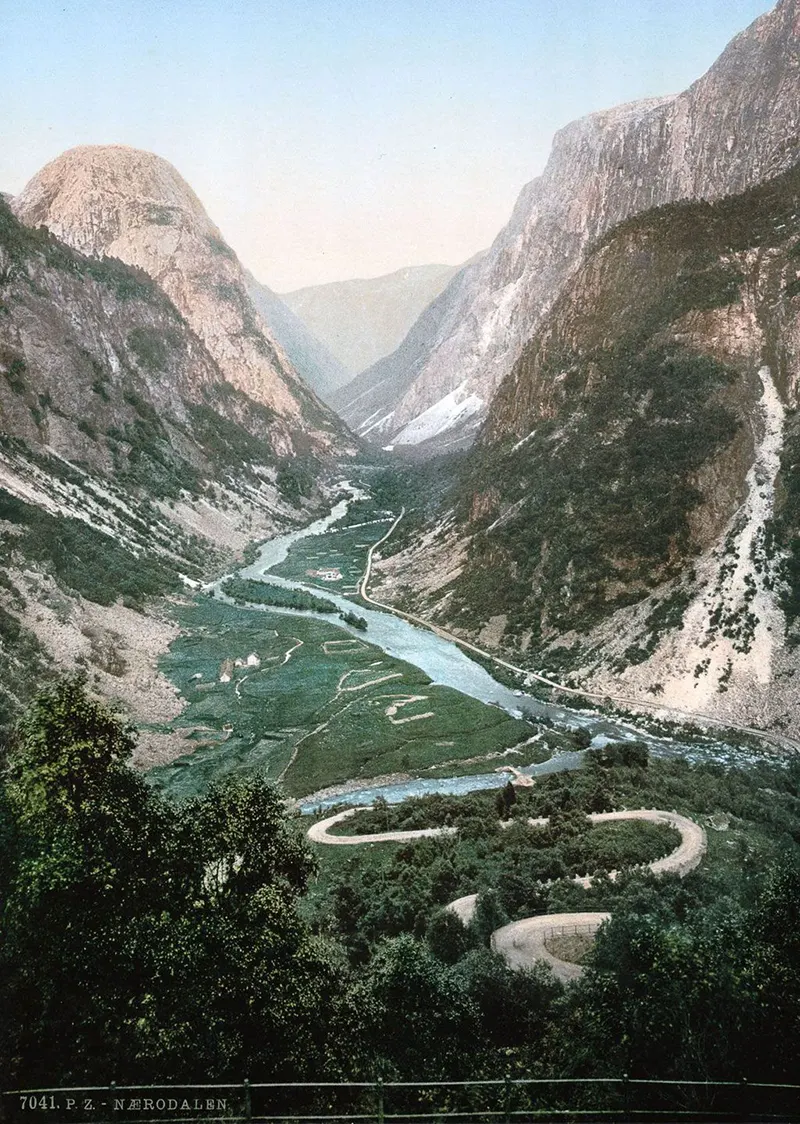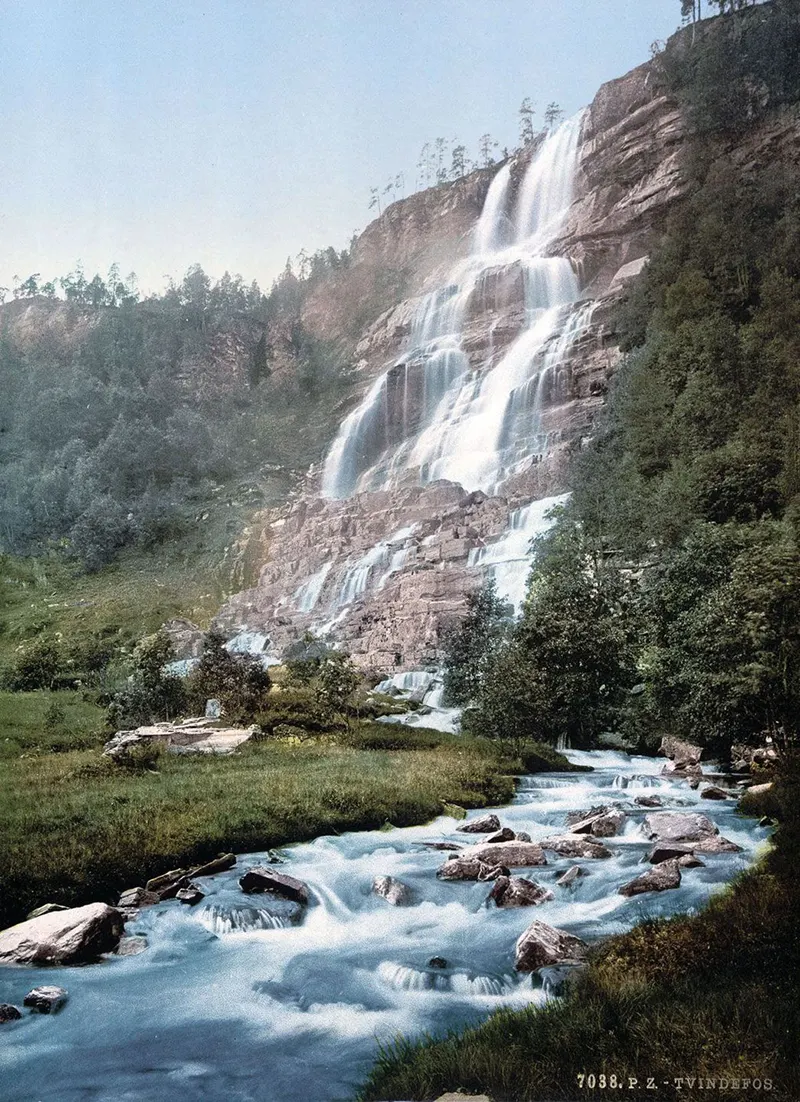Photochrom produced colorized images from a single black-and-white photographic negative via the direct photographic transfer of the negative onto lithographic printing plates. The process is a photographic variant of chromolithography (color lithography). Because no color information was preserved in the photographic process, the photographer would make detailed notes on the colors within the scene and use the notes to hand paint the negative before transferring the image through colored gels onto the printing plates. Highlighting just how diverse the landscapes of Norway can be, these scenes show green pastures and sleepy villages that give way to rushing waterfalls and towering glaciers. Norway had benefited from the 18th century which was completely free from wars and conflicts. This allowed the people of Norway to live a romantic life tending to their land and nurturing the village way of life. A large proportion of Norwegian people were fishermen – making use of the spectacular planes of water seen throughout these images. Urban city dwelling was uncommon – with no towns exceeding 15,000 inhabitants. Instead, the life of the Norwegian people was focused on smaller villages that cultivated tranquil communities amongst the grand settings of the mountains. (Photo credit: Library of Congress / Daily Mail UK). Notify me of new posts by email.
Δ Subscribe



